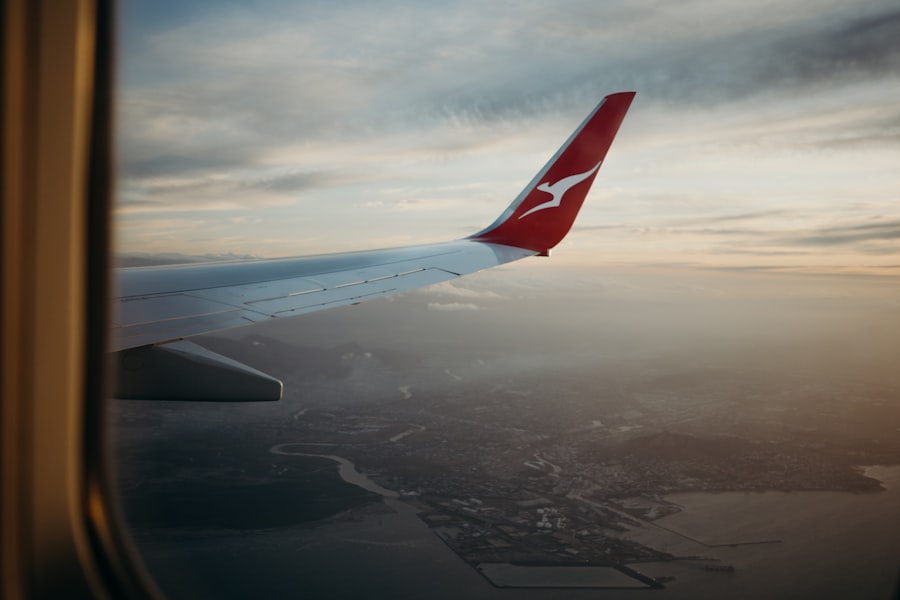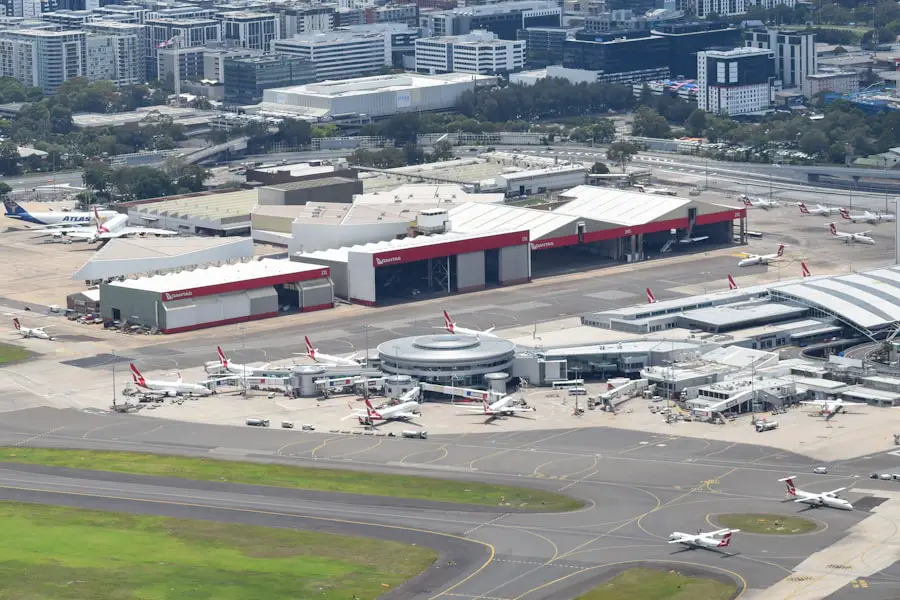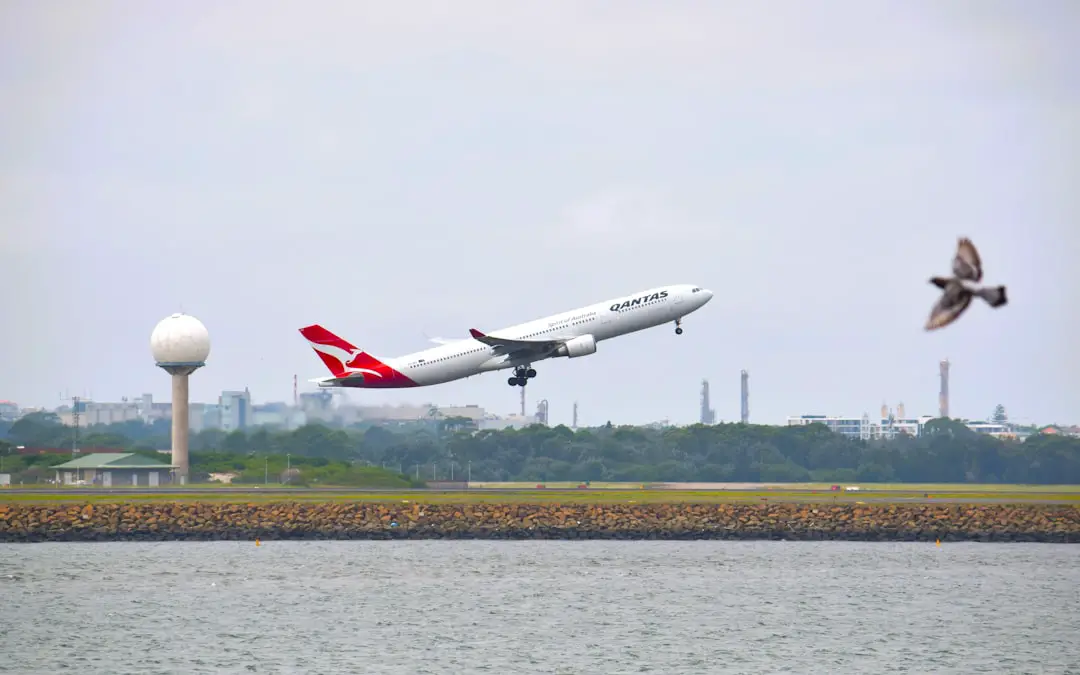Emirates Airline, the flagship carrier of the United Arab Emirates, has established itself as a prominent player in the global aviation industry since its inception in 1985. With its headquarters in Dubai, Emirates has grown from a modest airline operating just two aircraft to one of the largest and most recognized airlines in the world, boasting a fleet of over 250 aircraft and serving more than 150 destinations across six continents. The airline is renowned for its luxurious services, state-of-the-art aircraft, and commitment to customer satisfaction, making it a preferred choice for travelers seeking both comfort and quality.
The airline’s rapid expansion has been fueled by Dubai’s strategic location as a global hub for trade and tourism. Emirates has capitalized on this advantage, connecting passengers from various parts of the world through its extensive network. The airline’s commitment to excellence is reflected not only in its service offerings but also in its unwavering focus on safety.
As air travel continues to evolve, Emirates remains at the forefront of implementing advanced safety measures and protocols, ensuring that passengers can travel with peace of mind.
Key Takeaways
- Emirates Airline is known for its commitment to safety and has a strong safety record.
- The airline has implemented rigorous safety measures and protocols to ensure the well-being of passengers and crew.
- Emirates has a history of prioritizing safety and has a strong safety record compared to other major airlines.
- Technology plays a crucial role in ensuring safety at Emirates, with advanced systems and equipment in place.
- Pilot training and experience, as well as maintenance and inspection, are key factors in preventing crashes at Emirates.
Safety measures and protocols in place at Emirates
Emirates Airline places paramount importance on the safety of its passengers and crew, implementing a comprehensive array of safety measures and protocols that adhere to international standards. The airline’s safety management system is designed to identify, assess, and mitigate risks associated with flight operations. This proactive approach involves continuous monitoring and evaluation of safety performance, ensuring that any potential hazards are addressed promptly.
One of the key components of Emirates’ safety protocols is its rigorous training program for all personnel involved in flight operations. Flight crews undergo extensive training that includes simulations of emergency scenarios, enabling them to respond effectively in high-pressure situations. Additionally, cabin crew members are trained in first aid and emergency evacuation procedures, ensuring that they are well-prepared to assist passengers during any unforeseen events.
The airline also conducts regular safety drills and assessments to reinforce these skills and maintain a high level of readiness.
The history of Emirates and its safety record

Since its establishment, Emirates Airline has maintained an impressive safety record, which is a testament to its commitment to operational excellence. The airline’s journey began with just two aircraft—a Boeing 737 and an Airbus A300—but it quickly expanded its fleet and routes, driven by a vision to provide world-class service. Over the years, Emirates has invested heavily in modernizing its fleet with the latest aircraft technology, including the Airbus A380 and Boeing 777, both known for their advanced safety features. Throughout its history, Emirates has experienced very few incidents that have compromised passenger safety. The airline’s proactive approach to safety management has played a crucial role in maintaining this record.
For instance, Emirates was one of the first airlines to adopt the International Air Transport Association’s (IATA) Operational Safety Audit (IOSA) program, which evaluates operational management and control systems. This commitment to safety has earned Emirates numerous accolades and recognition within the aviation industry.
Comparing Emirates safety record to other major airlines
| Airline | Number of Accidents | Fatalities | Accident Rate |
|---|---|---|---|
| Emirates | 0 | 0 | 0 |
| Delta Air Lines | 0 | 0 | 0 |
| American Airlines | 0 | 0 | 0 |
| United Airlines | 0 | 0 | 0 |
When comparing Emirates’ safety record to that of other major airlines, it becomes evident that Emirates stands out as a leader in aviation safety. According to various aviation safety rankings and reports, Emirates consistently ranks among the safest airlines globally.
com, a well-respected aviation safety and product rating agency, has awarded Emirates a seven-star safety rating, placing it alongside other top-tier carriers.
In contrast, some airlines have faced scrutiny due to their safety records or incidents that have raised concerns among passengers. While no airline is entirely free from risk, Emirates’ commitment to maintaining high safety standards sets it apart from many competitors. The airline’s investment in technology, training, and maintenance practices contributes significantly to its reputation as one of the safest airlines in the world.
The role of technology in ensuring safety at Emirates
Technology plays a pivotal role in enhancing safety at Emirates Airline. The airline has embraced cutting-edge innovations that improve operational efficiency and reduce the likelihood of accidents. One notable example is the implementation of advanced flight management systems that provide pilots with real-time data on weather conditions, air traffic, and aircraft performance.
These systems enable flight crews to make informed decisions during all phases of flight. Moreover, Emirates has invested in state-of-the-art aircraft equipped with sophisticated avionics and safety features. For instance, the Boeing 777 is equipped with an advanced autopilot system that assists pilots in navigating complex airspace while minimizing human error.
Additionally, the airline utilizes predictive maintenance technology that analyzes data from aircraft systems to identify potential issues before they escalate into serious problems. This proactive approach not only enhances safety but also contributes to operational efficiency by reducing downtime.
The impact of pilot training and experience on safety at Emirates

The training and experience of pilots are critical factors influencing the overall safety of any airline, and Emirates is no exception. The airline employs a rigorous selection process for its pilots, ensuring that only highly qualified individuals are chosen to operate its aircraft. Once selected, pilots undergo extensive training programs that encompass both theoretical knowledge and practical skills.
Emirates places significant emphasis on simulator training, allowing pilots to practice various flight scenarios in a controlled environment. This training includes emergency procedures, adverse weather conditions, and system failures, enabling pilots to develop the skills necessary to handle challenging situations effectively. Furthermore, experienced captains often mentor junior pilots, fostering a culture of continuous learning and knowledge sharing within the cockpit.
The importance of maintenance and inspection in preventing crashes at Emirates
Maintenance and inspection are integral components of Emirates’ safety strategy. The airline adheres to stringent maintenance schedules mandated by aviation authorities and employs a team of highly skilled engineers and technicians responsible for ensuring that every aircraft meets or exceeds safety standards. Regular inspections are conducted at various intervals—daily checks before flights, routine maintenance every few months, and comprehensive overhauls at specified milestones.
Emirates utilizes advanced maintenance tracking systems that monitor aircraft performance data in real-time. This technology allows maintenance teams to identify potential issues early on and address them before they pose a risk to flight safety.
This commitment to meticulous maintenance not only enhances passenger safety but also extends the lifespan of the fleet.
How Emirates handles emergency situations and crises
In the event of an emergency situation or crisis, Emirates Airline has established protocols designed to ensure the safety of passengers and crew while minimizing panic and confusion. The airline conducts regular emergency drills that simulate various scenarios—such as engine failure or cabin depressurization—allowing crew members to practice their response strategies in real-time. Communication is key during emergencies; therefore, Emirates emphasizes clear communication between flight crews and ground control.
In-flight announcements are made promptly to keep passengers informed about the situation while providing instructions on how to respond effectively. Additionally, cabin crew members are trained to manage passenger behavior during emergencies, ensuring that everyone remains calm and follows evacuation procedures if necessary.
Passenger safety and comfort on Emirates flights
Passenger safety is paramount at Emirates Airline; however, it is equally important for the airline to ensure passenger comfort throughout their journey. The airline’s modern fleet features spacious cabins designed with passenger well-being in mind. From ergonomic seating arrangements to advanced air filtration systems that enhance air quality onboard, every aspect is carefully considered.
Emirates also provides passengers with access to a wide range of entertainment options through its award-winning ice system (information, communication, entertainment). This system not only keeps passengers engaged during long-haul flights but also serves as an additional layer of comfort by helping them relax during their journey. By prioritizing both safety and comfort, Emirates creates an environment where passengers can enjoy their travel experience without compromising their well-being.
The future of safety at Emirates and its commitment to zero crashes
As air travel continues to evolve with advancements in technology and changing regulations, Emirates Airline remains committed to enhancing its safety measures further. The airline is actively exploring innovative solutions such as artificial intelligence (AI) for predictive analytics in maintenance and operational decision-making processes. By leveraging AI capabilities, Emirates aims to identify potential risks before they manifest into actual incidents.
Moreover, Emirates is dedicated to fostering a culture of safety within its organization by encouraging open communication among employees regarding safety concerns or suggestions for improvement. This proactive approach ensures that all personnel feel empowered to contribute to the airline’s overarching goal: achieving zero crashes. By continuously investing in training programs, technology upgrades, and maintenance practices, Emirates is poised to maintain its status as one of the safest airlines in the world.
Emirates as the safest airline
Emirates Airline’s unwavering commitment to safety is evident through its comprehensive measures encompassing training, technology integration, maintenance practices, and emergency preparedness protocols. With an impressive safety record that stands out among major airlines globally, Emirates continues to prioritize passenger well-being while providing exceptional service quality. As it looks toward the future with ambitious goals for zero crashes, Emirates remains a beacon of excellence in aviation safety—a testament to what can be achieved when an airline places safety at the forefront of its operations.
Did you know that Qantas Airways is one of the few airlines in the world that has never had a fatal crash? This impressive safety record has made them a trusted choice for travelers around the globe. If you’re planning a trip and want to ensure a smooth journey, be sure to check out these 5 best hard case golf travel bags for spring 2025 to keep your equipment safe and secure during your travels.
FAQs
What airline has never had a crash?
As of the time of writing, Qantas is often cited as the airline that has never had a fatal crash in its history.
How long has Qantas been operating without a fatal crash?
Qantas has been operating for over 100 years and has never had a fatal crash in its history, making it one of the safest airlines in the world.
What safety measures does Qantas have in place to maintain its safety record?
Qantas has a strong safety culture and is known for its rigorous safety standards, regular maintenance of its aircraft, and continuous training for its pilots and crew.
Are there any other airlines with a similar safety record?
While Qantas is often cited as the airline with the longest record of no fatal crashes, there are other airlines with excellent safety records, such as Air New Zealand, Emirates, and Singapore Airlines.
